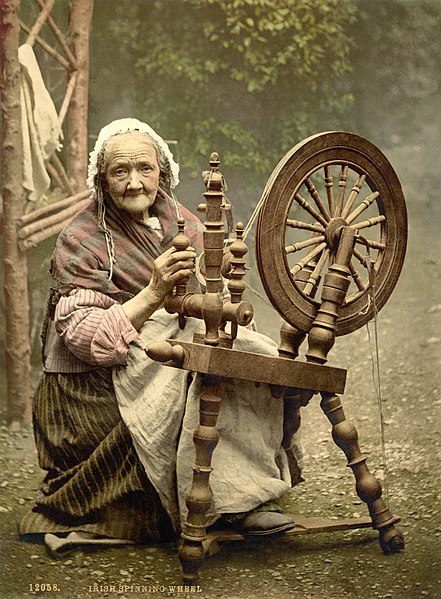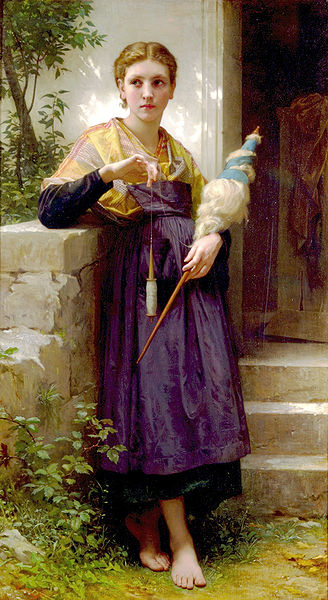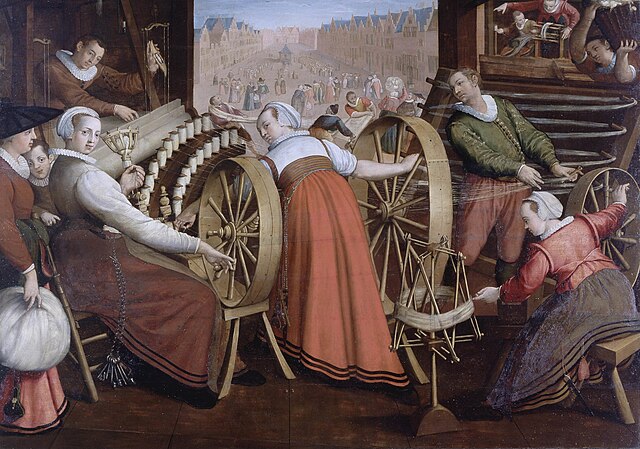A spinning wheel is a device for spinning thread or yarn from fibres. It was fundamental to the cotton textile industry prior to the Industrial Revolution. It laid the foundations for later machinery such as the spinning jenny and spinning frame, which displaced the spinning wheel during the Industrial Revolution.
Woman with Irish spinning wheel from around 1900. This image, taken from the Library of Congress collection, is a posed photo taken for nostalgic purpose—by the time this picture was taken, the spinning wheel had been out of use in virtually all practical everyday situations for at least a half-century.[citation needed]
Hindoo Spinning-Wheel (1852)
Scene from Al-Maqamat, painted by al-Wasiti (1237)
Spinning wheel depicted in the Smithfield Decretals [it], between 1300 and 1340
Spinning is an ancient textile art in which plant, animal or synthetic fibres are drawn out and twisted together to form yarn. For thousands of years, fibre was spun by hand using simple tools, the spindle and distaff. It was only with the invention of the spinning wheel in the Islamic world circa 1030, and its subsequent introduction to China, India and Europe in the High Middle Ages, that the output of individual spinners dramatically increased. Mass production later arose in the 18th century with the beginnings of the Industrial Revolution. Hand-spinning remains a popular handicraft.
The Spinner by William-Adolphe Bouguereau shows a woman hand-spinning using a drop spindle. Fibers to be spun are bound to a distaff held in her left hand.
Woman spinning, fanned by attendant with whole fish on table, 700–550 BC from Neo-Elamite period in Susa
Woman spinning. Detail from an Ancient Greek attic white-ground oinochoe, ca. 490 BC, from Locri, Italy. British Museum, London.
1595 painting illustrating Leiden textile workers




![Spinning wheel depicted in the Smithfield Decretals [it], between 1300 and 1340](https://upload.wikimedia.org/wikipedia/commons/thumb/7/7a/An_amorous_encounter_-_Smithfield_Decretals_%28Decretals_of_Gregory_IX%29_%28c.1340%29%2C_f.139_-_BL_Royal_MS_10_E_IV.jpg/640px-An_amorous_encounter_-_Smithfield_Decretals_%28Decretals_of_Gregory_IX%29_%28c.1340%29%2C_f.139_-_BL_Royal_MS_10_E_IV.jpg)



